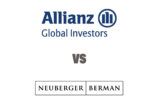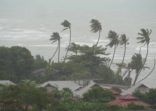In an environment when the expected return from various asset classes could be lower due to rising valuations in recent years, differentiation within asset classes should help investors extract a more desirable risk-adjusted return, especially in fixed income, the investment manager said.
As the imminent US interest rate hike creates a challenging environment for expected fixed income returns, investors should look for income opportunities from alternative sources.
In fixed income, they should focus on the riskier parts, including high yield corporate bonds and emerging market debt.
“The year 2015 is shaping up to be one of economic and policy divergence and dollar recovery. Overall, we believe that the economic environment in 2015 should remain supportive of equities and increasingly challenging to fixed income.
“An active and flexible approach is necessary to navigate a more complex fixed income market. In particular, investors will need to strike a balance among yield, duration and credit risk, as well as exchange rate exposure.”
In equities, the fund house said investors could consider sectors that would benefit from cyclical growth while enjoying a good dividend yield.
“Dividends, including re-investment and compounding, have been understated as a contributor to total return. In Asia, there is a trend for companies to increase dividend payout given high cash positions. “
Developed versus EM
Both emerging market and Asian equities are trading at the low end of their 20-year valuation ranges, the fund house said.
“This reflects a conservative view on earnings growth, pessimism on commodities and prospects of a strong US dollar.”
While emerging markets, including China, Indonesia, Brazil and Russia, are going through a cyclical consolidation, the fund house believes there are structural developments, such as the growth of consumerism and the build out of infrastructure, that offer investors opportunities.
The fund house was of the view that the above-average valuations of US equities are justified, taking into consideration the earnings growth, which it expects to be sustainable as the US economy expands.
“Earnings growth in the US and Japan is outpacing Europe, emerging markets and Asia. Lack of growth is dampening sentiment on Europe, but low borrowing costs and euro depreciation should help to protect corporate profits.”
Rate cycle
The fund house sees a modest global growth environment, which implies limited demand-side inflationary pressure, thus reducing the need for most central banks to push rates up substantially.
It expects the US Federal Reserve and the Bank of England to start raising their policy rates gradually in 2015 while it sees the European Central Bank and the Bank of Japan continuing to expand their balance sheets to fight deflationary pressures.
“While the US continues to normalise its monetary policy, the same does not apply elsewhere, as weakness in Europe and Japan is pointing towards more policy actions from the central banks to stimulate growth in these economies.”
This creates an environment where uneven global growth might keep aggregate policy loose, providing support for global equities.
Dollar strength
The US dollar is likely to remain well supported by a number of factors. These include the rising bond yield relative to bonds denominated in other major currencies as a result of the Federal Reserve’s policy normalisation, improved current account position and capital inflows to take advantage of a decent growth environment.
Historically, emerging markets have underperformed in an environment of US dollar strength, but the risks are reduced, the firm said.
“Compared with the 1990s, EM countries have adopted a more flexible exchange rate system, increased FX reserves and managed their external debt in a more prudent fashion.”
















